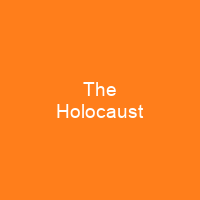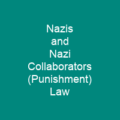The Holocaust: A Tragic Chapter in Human History
Imagine a world where six million lives were extinguished in the blink of an eye—six million souls who had dreams, families, and futures. The Holocaust was not just a series of tragic events; it was a systematic genocide that targeted European Jews during World War II. How could such a horrific event happen?
The Roots of Hatred
The seeds of the Holocaust were sown long before the war began. The Nazis, led by Adolf Hitler, developed an ideology based on racism and the belief in a superior Aryan race. They sought to create a world without Jews, whom they saw as ‘the embodiment of everything that was wrong with modernity.’ Was this hatred purely ideological, or did it have deeper roots?
The Rise of Nazi Germany
In 1933, the Nazis seized power in Germany. They rapidly increased their support and became the dominant political force. Hitler became chancellor and implemented measures to ban all other political parties, seize media control, arrest opponents, and set up camps for extrajudicial imprisonment. How did such a radical change come about so quickly?
The Implementation of Persecution
The Nazis passed 1,500 anti-Jewish laws, banning Jews from several professions and restricting their economic activity. They also criminalized new marriages and sexual relationships between Jews and non-Jewish Germans with the Nuremberg Laws in 1935. How did these laws affect everyday life for German Jews?
The Holocaust: A Genocide of Unprecedented Scale
The persecution of Jews escalated dramatically after the invasion of Poland on September 1, 1939. The Nazis established ghettos and forced labor camps where victims were killed with gas or sent to work under brutal conditions. How did these ghettos function, and what was life like for those trapped within them?
The Ghettos: A Living Hell
In the Warsaw Ghetto, synagogues were burned, and thousands of Jews fled or were expelled into the Soviet occupation zone. The Nazis issued various anti-Jewish regulations, including the requirement that adult Jews perform forced labor and wear white armbands. How did these ghettos become places of both survival and death?
The Einsatzgruppen: Mass Murder on a Scale
The systematic murder of Jews began in 1941, with Einsatzgruppen reorganized for mass killings. Tens of thousands were shot by the end of July. In Lithuania, executions peaked at 40,000 a month in August and September. How did these operations justify their actions?
The Extermination Camps: A Final Solution
Extermination camps like Belzec, Sobibor, and Treblinka reported significant profits from stolen belongings. About half of the Jews killed in the Holocaust died by poison gas. How did these camps operate, and what was their purpose?
The Aftermath: A Legacy of Sorrow
After liberation, many survivors attempted to return home but faced numerous challenges. Limited success in finding relatives, refusal of non-Jews to return property, and violent attacks convinced many to leave eastern Europe. Antisemitism increased in several countries after the war. How did the world respond to these survivors?
The Trials: Justice Sought
Most Holocaust perpetrators were never put on trial for their crimes. The International Military Tribunal tried 23 Nazi leaders primarily for waging wars of aggression, and West Germany investigated 100,000 people and tried more than 6,000 defendants. Why did justice not prevail for all?
The Financial Impact: A Legacy of Loss
Holocaust memory has provided both shared history and an emotional rationale for committing to human rights. The Jewish population remains below pre-Holocaust levels, with 15.2 million Jews worldwide in 2020, compared to 16.6 million in 1939. How does the Holocaust continue to shape our understanding of humanity?
The Holocaust is a stark reminder of the depths of human cruelty and the importance of vigilance against hatred. It serves as a benchmark in genocide studies, but its legacy extends far beyond academic discourse. The memory of those six million lives lost should inspire us to work tirelessly towards a world free from such atrocities.

You want to know more about The Holocaust?
This page is based on the article The Holocaust published in Wikipedia (retrieved on January 27, 2025) and was automatically summarized using artificial intelligence.





